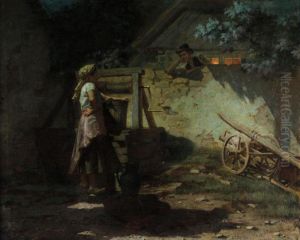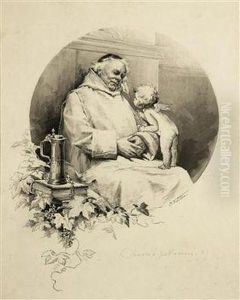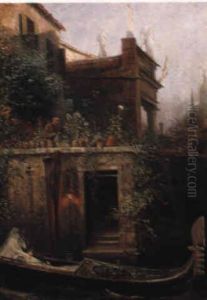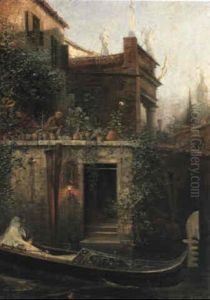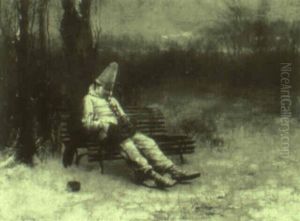Emanuel Liska Paintings
Emanuel Liska, born on April 17, 1887, in Prague, which was then part of the Austro-Hungarian Empire, was a Czech illustrator, caricaturist, and graphic artist known for his contribution to the modern art movement in Czechoslovakia. He grew up during a period of significant cultural and political development in his homeland, which would later influence his artistic direction.
Liska studied at the Academy of Fine Arts in Prague under the guidance of renowned professors such as Max Švabinský, who was a significant influence on his early style. Liska's artistic career began with illustrations for magazines and books, exhibiting a keen sense of detail and a stylistic approach that combined elements of Art Nouveau with emerging modernist tendencies.
During World War I, Liska served in the Austro-Hungarian army, and his experiences during the war would later be reflected in his art, often characterized by a poignant commentary on social issues and the human condition. After the war, he returned to Prague, where he became an active member of the Czech avant-garde art scene. He contributed to various periodicals, including the satirical magazine 'Simplicus' and 'Aventinum', which played a pivotal role in the development of Czech modernist literature and art.
Liska's work often featured a combination of satirical edge and poignant social commentary, which made him popular among the intellectual circles of the time. His illustrations were characterized by sharp lines, expressive figures, and a certain dynamism that captured the complexities of the interwar period.
During the 1930s and 1940s, Liska continued to work as an illustrator and also engaged in book design, where he applied his graphic skills to create distinctive covers and layouts that harmonized with the content of the books. His work during this time reflects a mastery of various techniques and a versatility in adapting his style to different subjects and purposes.
Emanuel Liska's career spanned a tumultuous period in European history, including two World Wars and the rise and fall of empires. Through it all, his art remained a testament to the resilience of the human spirit and the power of visual commentary. He passed away on May 20, 1958, leaving behind a legacy of influential illustrations and graphic art that continue to be studied and appreciated for their historical and aesthetic significance.

